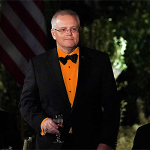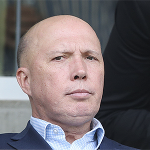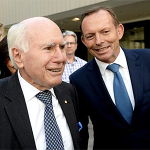After the Premier of South Australia put Whyalla Steelworks into administration, Mr Albanese found another $2.4 billion of taxpayers’ money to bail out the failed company. The Albanese government has since appeared ready to double-down on the production of ‘green steel’ at the plant. This has all the hallmarks of a bottomless pit. Without nuclear, green steel is another Labor unicorn that will reinforce what is now well-known wisdom: Go woke, go broke.
Green steel is a loose term that refers to attempts to produce steel with reduced carbon emissions and environmental impacts. The Whyalla Steelworks green dream has all the hallmarks of the policies pursued by the now-invisible Minister for Climate Change and Energy, Chris Bowen, who has no Plan B for Australia’s energy needs.
Whyalla Steelworks is yet another canary in the cage for ideologically driven energy policy. The plant has a long history of supplying heavy industry, such as producing railway tracks and driving Australia’s efforts to produce ships and other military hardware during the second world war. Rather than drive national output, the plant has been focused for some time now on driving green ideology.
One of the major environmental impacts of the plant is its use of water from the Murray River. To reduce its impact on the Murray, a reverse osmosis desalination plant was commissioned in 2011. In addition, SA Water currently operates 13 reverse osmosis seawater desalination plants in South Australia. The main drawbacks of the reverse osmosis process are high energy demand and the technology itself is expensive.
Another desalination plant and pipeline known as the Northern Water project is estimated to cost some $5 billion, with more than $230 million of state and federal taxpayers’ dollars already provided for the planning phase.
The green energy for the Whyalla Steelworks is to be provided by green hydrogen. The South Australian government’s proposed 200MW Whyalla hydrogen plant received state and federal approval last year. A consortium of government and industry has already received $402 million in funding for the project. This is in addition to the Port Bonython Hydrogen Hub nearby. These projects were described as ‘unusual’ and ‘hypothetical’ when first proposed by SA Labor when in opposition.
Hydrogen is produced by electrolysers that split water into hydrogen and oxygen. Green hydrogen is produced by powering the electrolysers with ‘renewables’ like wind, solar, and hydropower. According to SA Labor’s policy, the hydrogen would then be used to fire an electricity generator in a similar way that gas is currently used.
At 30MW, China’s Jupiter One is currently the most powerful hydrogen generator in existence. South Australia is aiming to produce its own generator with a capacity of some 170MW more. To my knowledge, no such functioning plant exists at this stage.
The single biggest problem with green steel powered by green hydrogen is that it relies on wind and solar (hydro is impractical near Whyalla). The steelworks would therefore be competing for energy with the desalination plants and the hydrogen electrolysers.
Commercial green hydrogen projects throughout the world are failing to get off the ground. The effort required to produce hydrogen, which is not a dense form of energy, is such that it only makes sense if a particular source is producing too much energy, and the excess can then be stored as hydrogen.
As we have seen in South Australia and elsewhere, Australia produces excess solar energy during the day, but the inability to store it economically at scale means that solar energy is not necessarily efficient, reliable, or cheap when it comes to heavy industry. To put that use into context, the Tomago Aluminium smelter in NSW consumes some 10 per cent of the state’s energy production.
The Albanese government’s $2.4 billion bailout of Whyalla Steelworks is necessary to ensure one of our most important plants continues to function. However, the situation was brought about through the pursuit of green fantasies. Green steel, green hydrogen, green water, green nightmare.
If the goal is to reduce carbon emissions in our heavy industries, then nuclear, a proven technology, makes sense. Green energy to produce green hydrogen and green water to produce green steel requires a heap of green middlemen that are not only hypothetical at this stage but proving to be expensive and unworkable in practice.
Plants like Whyalla and Tomago could be powered by nuclear energy. Microsoft is developing one of the Three Mile Island nuclear power plants to generate electricity for their data centres and AI. Google and Amazon are looking to do something similar. None of these companies are looking to wind and solar.
If we are serious about our heavy industries, then we need to be serious about how these plants are powered. Relying on green dreams to power our heavy industries is irresponsible at a time when the world is fragmenting and national security ought to be our priority.
Sometimes it is necessary for government to support essential industries. History proves that to be the case. But history is also proving that green ideology is expensive and failing fast.
Until voters can see for themselves how the current green agenda is nothing short of economic vandalism, we only have ourselves to blame.
Dr Michael de Percy @FlaneurPolitiq is a political scientist and political commentator. He is a Fellow of the Royal Society of Arts, a Chartered Fellow of the Chartered Institute of Logistics and Transport (CILTA), and a Member of the Royal Society of NSW. He is Editor-in-Chief of the Journal of Telecommunications and the Digital Economy, Chairman of the ACT and Southern NSW Chapter of CILTA, and a member of the Australian Nuclear Association. Michael is a graduate of the Royal Military College, Duntroon and was appointed to the College of Experts at the Australian Research Council in 2022. All opinions in this article are the author’s own and are not intended to reflect the views of any other person or organisation.








